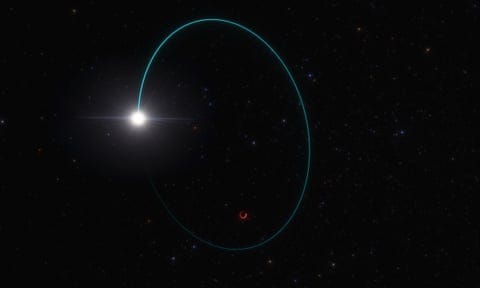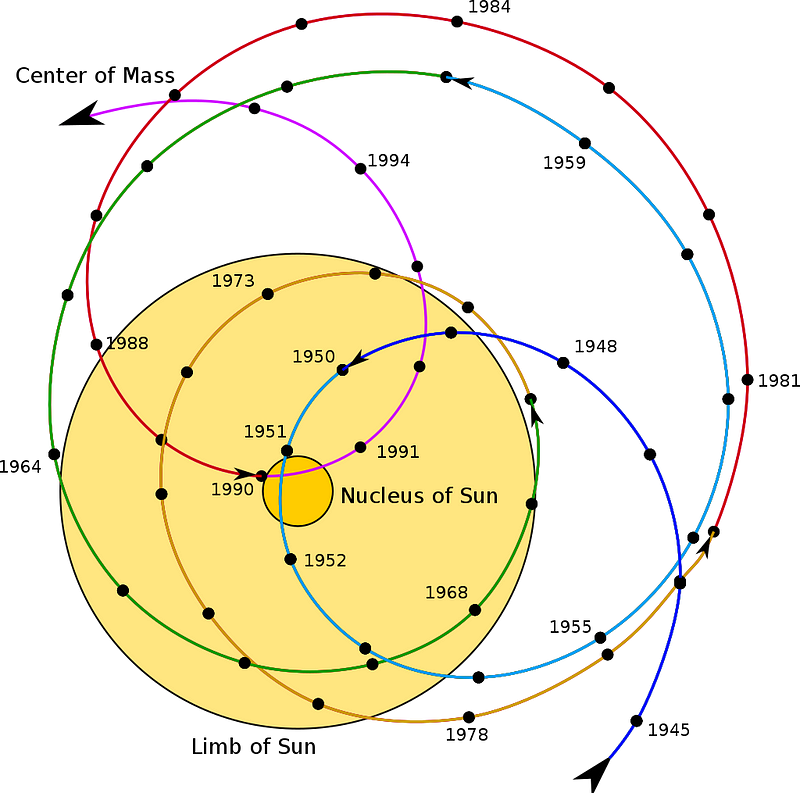Milky Way's Most Massive Stellar Black Hole Discovered
Written on
Chapter 1: Introduction to the Discovery
On April 8, 2024, researchers unveiled a significant finding from the pre-release data of the Gaia astrometry mission. The urgency of this announcement was fueled by the unexpected detection of a dormant black hole with a mass of approximately 33 solar masses in the Milky Way, specifically located in the constellation Aquila. This discovery was so groundbreaking that it warranted an early release of data that was not scheduled until late 2025.

Chapter 2: Understanding Stellar-Mass Black Holes
What exactly is a stellar-mass black hole, and how do these fascinating cosmic objects form? The term "stellar-mass black hole" indicates a specific category of black holes that arise from the remnants of massive stars after they exhaust their nuclear fuel. The conditions necessary for their formation are quite particular, and understanding these prerequisites is essential for grasping the nature of stellar-mass black holes.
Section 2.1: The Formation Pathway
The creation of a stellar-mass black hole does not occur randomly; it requires specific stellar evolution pathways. For a comprehensive breakdown of this process, we recommend diving deeper into our related articles.
Section 2.2: Detection Techniques
Now that we understand the prerequisites for black hole formation, let's explore how astronomers detect these elusive entities.
Astrometry, a specialized field of astronomy, focuses on measuring the positions and motions of celestial bodies with remarkable precision.

Astrometry has several key applications, including:
- Positional Measurements: Identifying celestial coordinates of stars, planets, and galaxies.
- Proper Motion: Measuring the apparent motion of stars across the sky, which provides insights into their dynamics within the Milky Way.
By leveraging these astrometric techniques, researchers were able to indirectly infer the presence of the black hole by tracking the movements of surrounding stars. The calculated "astrometric mass function" for certain star pairs indicated a significant mass, leading to the identification of the binary system known as Gaia BH3.
Chapter 3: Gaia BH3 - A Stellar Phenomenon
Gaia BH3 has been a subject of study since 2015 and is recognized for its substantial proper motion. Its luminous companion star has an estimated mass of around 0.76 ± 0.05 solar masses, while the black hole itself is estimated to have a mass of approximately 32.70 ± 0.82 solar masses. This significant mass marks it as the most massive stellar-origin black hole detected in our galaxy.
The discovery of such a massive black hole in conjunction with a metal-poor star presents intriguing questions regarding the formation of high-mass black holes. It suggests that these black holes might predominantly originate from low-metallicity stars, indicating a potential threshold for their formation.
Video: Scientists Find The Most Massive Stellar Black Hole Ever Detected in The Milky Way Galaxy
Chapter 4: Implications and Future Directions
The implications of discovering Gaia BH3 are profound, challenging existing theories on black hole formation and binary evolution. The dynamics involved in forming such high-mass black holes necessitate further research into their formation mechanisms and the environments in which they develop.
To gain a deeper understanding, check out this video:
Video: Milky Way's most massive stellar black hole discovered!
In conclusion, the discovery of Gaia BH3 not only enhances our understanding of black holes but also opens the door to new questions about stellar evolution and the nature of our universe.
If you're intrigued by this discovery and wish to learn more, we encourage you to engage with us through comments or social media. Your support is vital in our quest to explore the cosmos further. Consider joining our Patreon or Ko-fi community for exclusive content and discussions. Thank you for joining us on this journey!